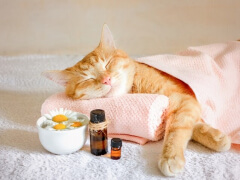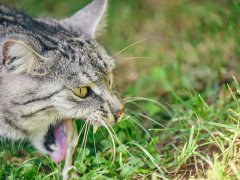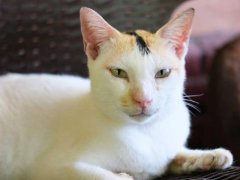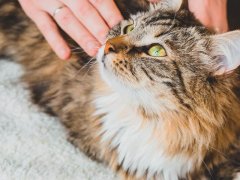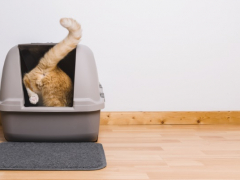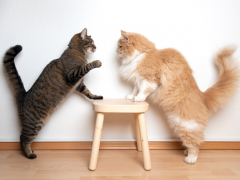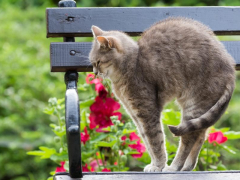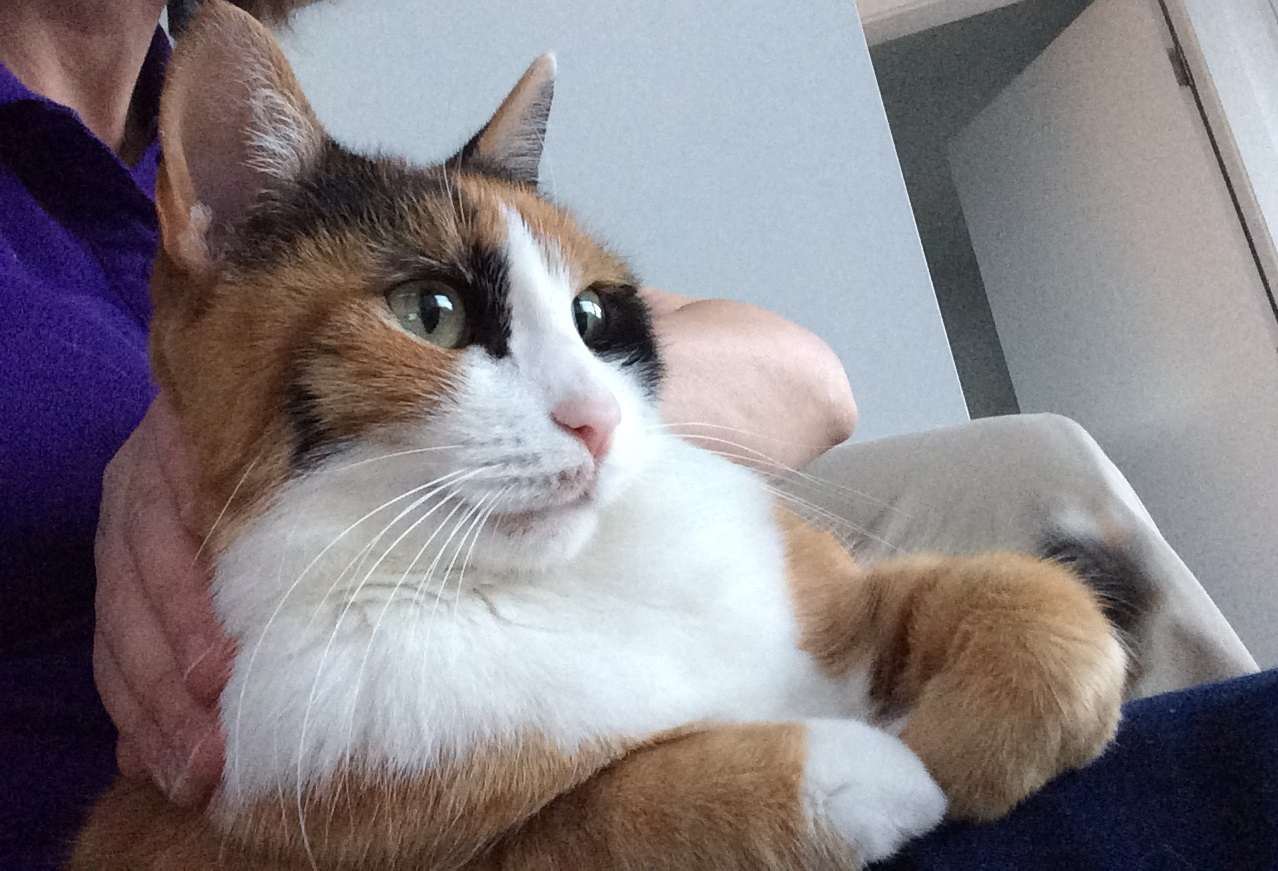
Melina Grin / Cats.com
Like humans, cats can experience the unique benefits of a therapeutic massage. This ancient healing practice can soothe and heal our feline companions. But just how effective is it?
In this article, we will delve into the practicality and effectiveness of cat massage therapy. Whether a professional veterinarian delivers it at a clinic or you apply it at home with a few training techniques as a dedicated pet guardian, this therapeutic practice can deepen your bond with your cat and significantly improve their well-being.
Overview of Cat Massage Therapy
Massage is the therapeutic manipulation of the body’s soft tissues. It is a complementary form of veterinary medicine that utilizes touch to improve physical and mental health. Massage may have immediate benefits for a patient; however, it usually requires repeated treatments to improve a particular condition.
Massage achieves its effects through mechanical, physiological, and psychological means. When you massage parts of your cat’s body, the muscles are mechanically stretched, reducing their tone and increasing their elasticity. At the same time, the soothing contact contributes to the nervous system’s relaxation. Massage therapists can identify and evaluate physical abnormalities, tension, soreness, adhesions, and other issues that may not be visible through an X-ray.
Developing trust in your hands is crucial if you’re considering learning to apply some of these techniques in your household. This trust-building massage therapy procedure benefits your cat and empowers you as a pet owner, giving you the confidence to provide the best care for your feline companion.
Health Benefits and Treatable Conditions
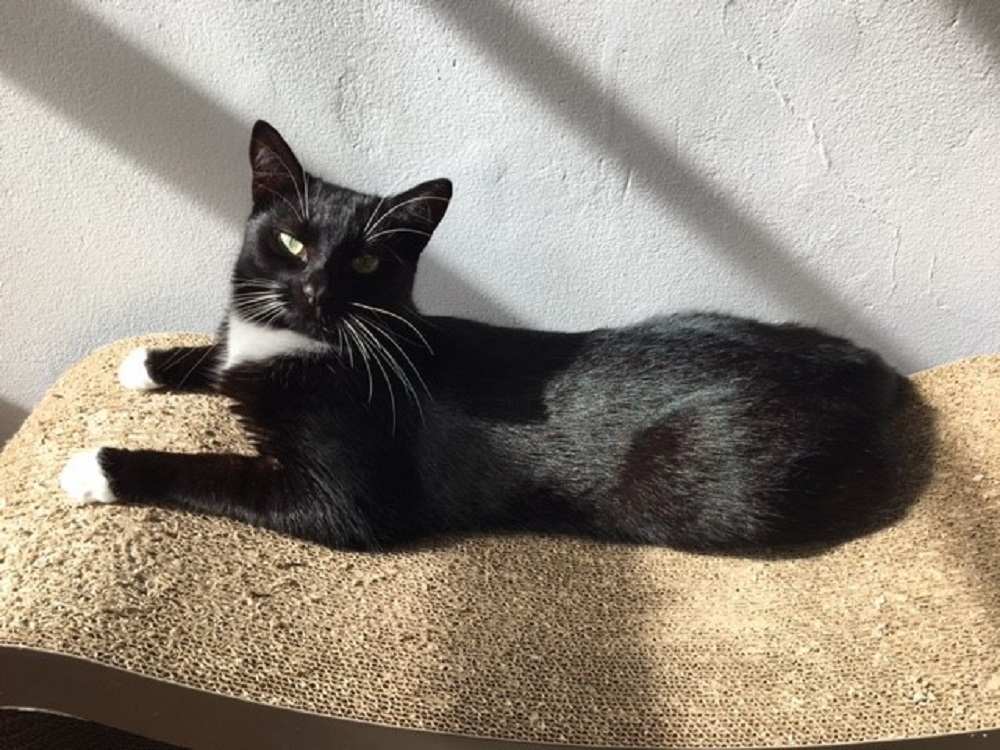
Melina Grin / Cats.com
Therapeutic cat massage is associated with a myriad of health benefits and is a suitable treatment option for several conditions:
- Accustoms a young cat to handling: Stroking young animals reduces their physiologic stress response. Young animals handled more often show more remarkable brain development, learn faster, and have more advanced neurological development than non-handled animals (Levine, 2004).
- Improves behavioral problems: Therapeutic massage is a natural remedy for reducing stress-related behavioral problems in rehomed cats. Research [1]and anecdotal evidence suggests that it is a powerful ‘tool’ for cats prone to anxiety if they enjoy touch. Weekly simple stroking and effleurage have helped my rescued kitten adjust to the new home and reduced my adult cat’s separation anxiety from moderate to mild.
- Boosts the integumentary system: Massage can enhance the health and appearance of your cat’s nails, skin, and fur, making them shinier and healthier.
- Relieves chronic pain: Massage therapy reduces pain in animals with painful conditions. Although unproven scientifically, it’s theorized that massage inhibits pain by stimulating the release of endorphins, opiate-like enzymes produced in the brain to reduce pain awareness (Hourdebaigt, 2004).
- Enhances the digestive system: Beyond its immediate physical and emotional benefits, massage therapy may also positively impact your cat’s digestive system, promoting better digestion and nutrient absorption.
- Boosts the immune system: Massaging may strengthen the immune system and help guard your cat against infections and illnesses.
- Increases serotonin: The warmth of the gliding hand promotes the release of endorphins, influences the blood capillaries, and increases oxygen flow to the area, producing a healing and relaxing effect.
- Orthopedic conditions: Cats suffering from orthopedic conditions such as luxating patella, hip dysplasia, and cruciate ligament rupture can benefit from manual therapy. Massage can help atrophied muscles gain strength, minimize muscle wastage in the opposing limb, increase nutrient intake, and remove toxins. It also helps to keep the muscle groups of the injured limb flexible, which is crucial for felines as it prevents injuries. Additionally, it can aid in stabilizing and strengthening overcompensating muscles, preventing further injury.
- Post-injury or surgery: Massage therapy can effectively restore function after surgery or injury. Simply resting is not always sufficient for healing, so gentle massages can help reduce inflammation and soreness, promote muscle recovery, prevent compensatory tension from developing in other body muscles, and provide overall comfort to your cat.
- Seniors with Osteoarthritis: A cat unable to exercise daily will benefit from light massage to improve cardiovascular health and mobility. While Arthritis is usually more prevalent in senior felines, it can also strike young ones. Massage stimulates circulation and lymphatic system movement plus relieves muscle tension and pain surrounding the affected joints. “Massage may contribute to slowing the degenerative process caused by such a condition.”[2]
Dr Naomi Boyd, the lead veterinarian-physiotherapist at the Small Animal Specialist Hospital in Australia, and I agree. “There is a scarcity of research examining massage therapy in cats. Given the benefits people report and the potential to educate owners on using this technique to comfort their cats, it would be fantastic to see studies undertaken in this area.”
Contraindications to Cat Massage Therapy
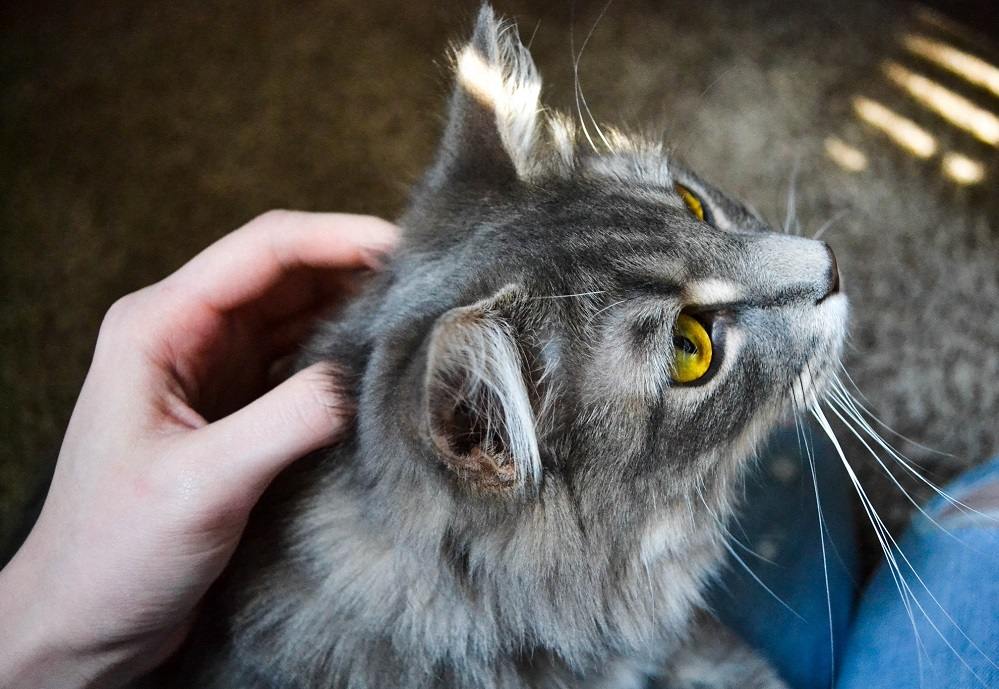
Melina Grin / Cats.com
Contraindications refer to specific circumstances in which cat massage should not proceed. The conditions below are the most common ones. Consult your veterinarian first if any of these conditions exist:
- Fever
- Shock
- A fracture or a torn ligament
- Infectious diseases
- Acute trauma or sprain, including pain on palpation.
- Abdominal discomfort or digestive problems like diarrhea or colitis.
- Heart conditions
- Tumors and cysts
- Inflammatory conditions
- Pregnancy
- Skin problems like ringworm and bacterial skin disease
- If your veterinarian or cat says – NO.
Techniques for Safe Cat Massage Therapy
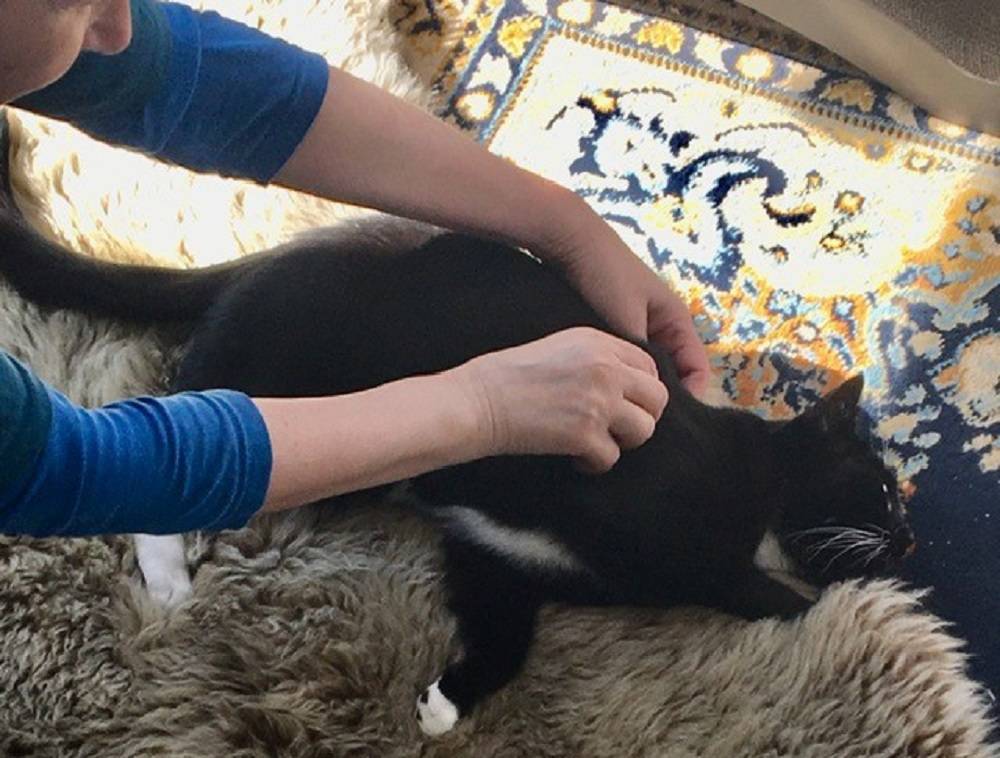
Melina Grin / Cats.com
This section introduces the five essential cat massage techniques. Each massage move can be soothing or stimulating, depending on the pressure and rhythm.
1. Stroking
Stroking is used for its calming effect and is a great technique to start a treatment. Stroking movements are performed relaxedly with the tips of your fingers or the palms of your hands using light pressure. Stroking should be done along the length of the muscles and following the direction of the cat’s fur.
2. Effleurage
Effleurage is a massage technique used at the beginning and end of any massage routine. It’s beneficial for soothing the body and reducing swelling. Effleurage involves gliding using the entire hand, fingers, and palm. The thumb should be placed close to the hand and in contact with the massaged body part. You can use one or both hands to alternate the gliding movement. It’s important to use light pressure and a slow rhythm.
3. Petrissage
Petrissage is a massage applied with deep pressures that compress the underlying tissues. It comprises kneading, compression, muscle squeezing, wringing, and skin rolling. The moves help to clean tissues of toxic waste products and assist circulatory exchange. The kneading technique is performed circularly with small half circles overlapping each other as though you are kneading dough. Kneading can help you feel scar tissue or stress points.
4. Compressions
Compression movements should be applied with the palm or lightly clenched fist, applying medium pressure directly onto the muscle groups. Use compressions when working over a bulky muscle, such as the hind legs or the hip area.
5. Tapotements
Tapotement, or percussion massage, involves applying a series of soft rhythmic blows to the body. The technique includes mechanical and stimulating clapping, cupping, hacking, and beating movements. The hands are used alternately in a light and springy manner. These movements promote circulation and lymph fluids, release histamine, and boost the body’s energy levels. Apply percussion massage in post-operative or recumbent patients and sports massage treatments, such as cat and dog agility.
How to Apply Cat Massage Therapy
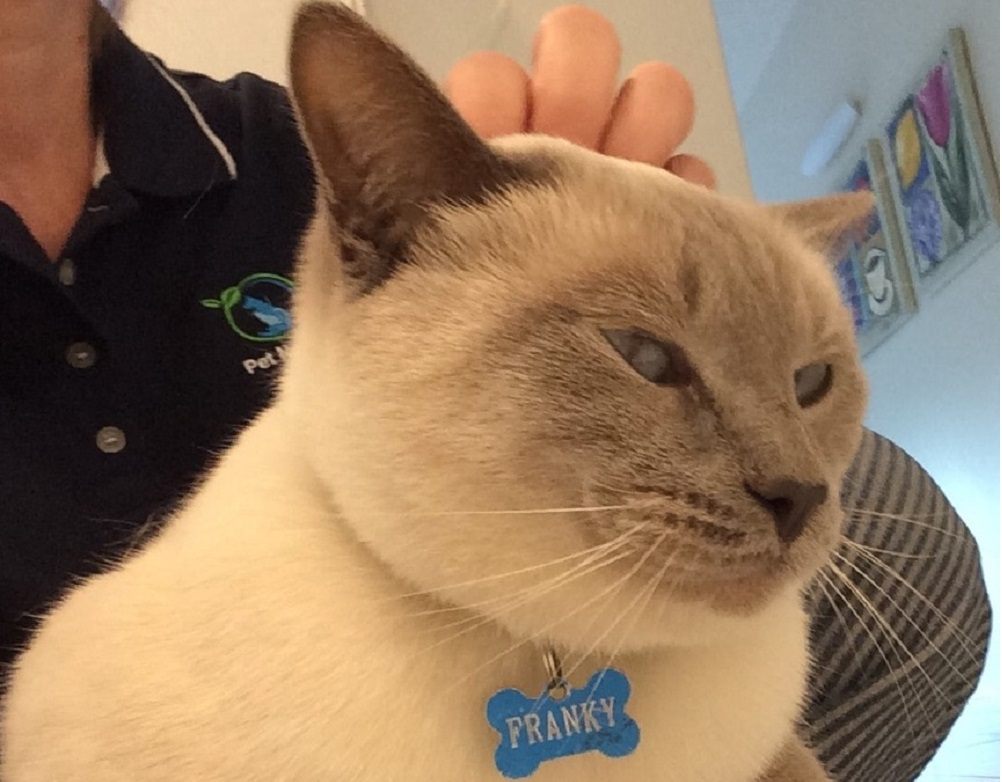
Melina Grin / Cats.com
1. Prepare Your Cat
Your cat should not eat for at least two hours before a massage and should be relaxed. Watch for emotional distress or signs of feeling unwell, as overstimulation or illness will hinder any massage efforts. Ensure there is fresh water nearby. Always ask your cat for permission before giving a massage.
2. Maintain a Calm, Positive Atmosphere
Cats are spirited beings, and they can pick up on your energy. If you’re stressed, worried, or tired, take some time to relax and center yourself. Creating a calm environment in a quiet room can help. Turn off your phone, play some soft classical music, and consider dimming the lights. When approaching your cat, speak softly as you let them sniff your open hands. The quality of the massage will depend on the sensitivity of your hands. To improve your skills, try massaging your pet with closed eyes.
3. The Four Ts
To give an effective therapeutic massage, distinguish between the four T’s: temperature, texture, tenderness, and tension. Body areas of cold temperature can indicate poor blood flow, while soft or puffy tissue texture may indicate oedema. Muscle tenderness could be a sign of underlying issues, while excessive tension in muscle fibers could indicate scar tissue. If you’re unsure of these sensations and want to give your cat a deeper massage, it’s best to take them to a vet clinic or a certified feline massage practitioner.
4. Stroke Your Cat’s Favorite Spots
Gently stroke their favorite spots, such as under the chin or cheek. Take your time and observe their reactions. If your cat enjoys having their head and ears touched, you can gently pull the ears from the base to the tips, stretching them sideways. Use hoop-like motions with your fingertips to massage their head, behind the ears and neck. Skip this part if they show discomfort.
5. Apply Effleurage
Place one hand on their shoulder and glide your other hand along the upper and lower body in a slow, smooth, circular rhythm. Massage both sides of your cat’s body to help them relax and prepare for the rest of the treatment.
6. Massage your Cat’s Shoulders
Massage the cat’s upper shoulders by stroking the neck downwards and massaging the upper shoulder blades on both sides with a smooth kneading motion to alleviate tension. Maintaining a constant connection is essential, so keep both hands on your pet throughout the massage. Observe your cat’s body language for signs of positive and negative feedback.
Signs of enjoyment include purring, closing their eyes, rubbing against you, grooming your arm, or kneading the blanket. Signs of discomfort or overstimulation include flattened ears, tail twitching, rapid breathing, or trying to move away.
7. Proceed to the Cat’s Back if They Are Tranquil.
Gently glide your hand on the upper back and apply light circular motions. Most cats are sensitive to the lower back and hip area, so proceed with gentle kneading over those areas. You can also add skin rolling, which maintains a shiny coat and breaks down fatty deposits to prevent adhesion formation. Closely examine your cat’s reactions to determine whether they enjoy the treatment.
8. Resist Your Cat’s Belly
Avoid massaging your cat’s belly, as it’s a susceptible area, especially if you are unfamiliar with feline anatomy and physiology. I know it is hard to resist that fluffy belly, but touching it could very well ruin your message session anyways.
9. Gently Grip the Cat’s Chest
You can gently grip your cat’s chest with your palm cupped as though holding a large water glass. Use your other hand to gently support their head or shoulders. You can also apply circular motions to the chest area with your fingertips, but don’t press hard on the cat’s ribs.
10. Tail Work.
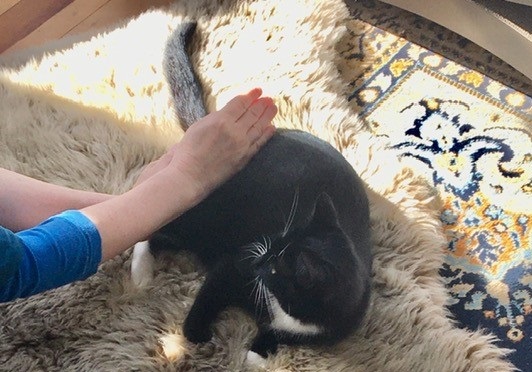
Melina Grin / Cats.com
While keeping contact with the rest of the body, use gentle pressure along the base of the tail and work towards stroking and stretching the tail gently. The tail is an extension of the cat’s vertebrae, so progressively release the tail and then stroke the hind quarters for a few seconds.
11. Stroke Your Cat’s Legs and Paws
After the tail work, proceed with gentle stroking down the cat’s back legs since you are already at the rear. Then, with a few stroking movements, move to the front legs. Many cats are sensitive to being touched on their paws. However, if your cat is still, massage the paws, toes and pads in a circular motion with gentle pressure.
12. Finish With Effleurage
Perform a final effleurage all over the body and finish the massage towards the heart to assist the natural blood supply. After your cat’s massage session, offer fresh water to help flush out contaminants and lactic acid from their body. Your cat may need to use the litter box and will likely want to nap after the massage. It’s best not to disturb your cat and let them sleep for as long as they wish.
When Do You Need To See a Specialist?
Therapeutic massage should not substitute for professional veterinary care. Your vet should be your first contact if your cat exhibits a persistent health problem or injury. Consult your vet if you notice a lump, hot spots, or any abnormalities during the massage.
A veterinarian, physiotherapist, or qualified vet technician with the appropriate NBCAAM certification should administer a professional remedial massage. However, cat owners can apply a few relaxation massage techniques at home as long as their cat does not become agitated and attempt to bite or scratch them.
-
Sharp B. Feline Physiotherapy and Rehabilitation: 1. Principles and potential. Journal of Feline Medicine and Surgery. 2012;14(9):622-632. https://journals.sagepub.com/doi/10.1177/1098612X12458209
-
Hourdebaigt, J.-P. (2004). Canine Massage - A complete Reference Manual. Wenatchee, WA, United States: Dogwise Publishing. Retrieved May 10, 2024
-
Levine, D. L. (2004). Canine Rehabilitation and Physical Therapy. United States: Elsevier. Retrieved May 05, 2024
-
Robertson, J. (2010). The complete dog massage manual. Parkway Farm Business Park, Middle Farm Way, Poundbury, Dorchester, Dorset, England: Veloce Publishing Limited. Retrieved May 15, 2024
-
SELYE H. Stress and the general adaptation syndrome. Br Med J. 1950 Jun 17;1(4667):1383-92. doi: 10.1136/bmj.1.4667.1383. PMID: 15426759; PMCID: PMC2038162. https://www.ncbi.nlm.nih.gov/pmc/articles/PMC2038162/
-
Lisa Corti, Massage Therapy for Dogs and Cats, Topics in Companion Animal Medicine, Volume 29, Issue 2, 2014, Pages 54-57, ISSN 1938-9736, https://doi.org/10.1053/j.tcam.2014.02.001. https://www.sciencedirect.com/science/article/pii/S1938973614000038
-
Millis DL, Levine D. Range-of-motion and stretching exercises. In: Millis DL, Levine D, eds. Canine Rehabilitation and Physical Therapy. 2nd ed. Philadelphia, PA: E
-
Maira Rezende Formenton, Marco Aurélio Amador Pereira, Denise Tabacchi Fantoni, Small Animal Massage Therapy: A Brief Review and Relevant Observations,
-
Topics in Companion Animal Medicine, Volume 32, Issue 4, 2017, Pages 139-145, ISSN 1938-9736, https://doi.org/10.1053/j.tcam.2017.10.001
-
Downing R. The role of physical medicine and rehabilitation for patients in palliative and hospice care. Vet Clin Small Anim 2011;41:591-608.
